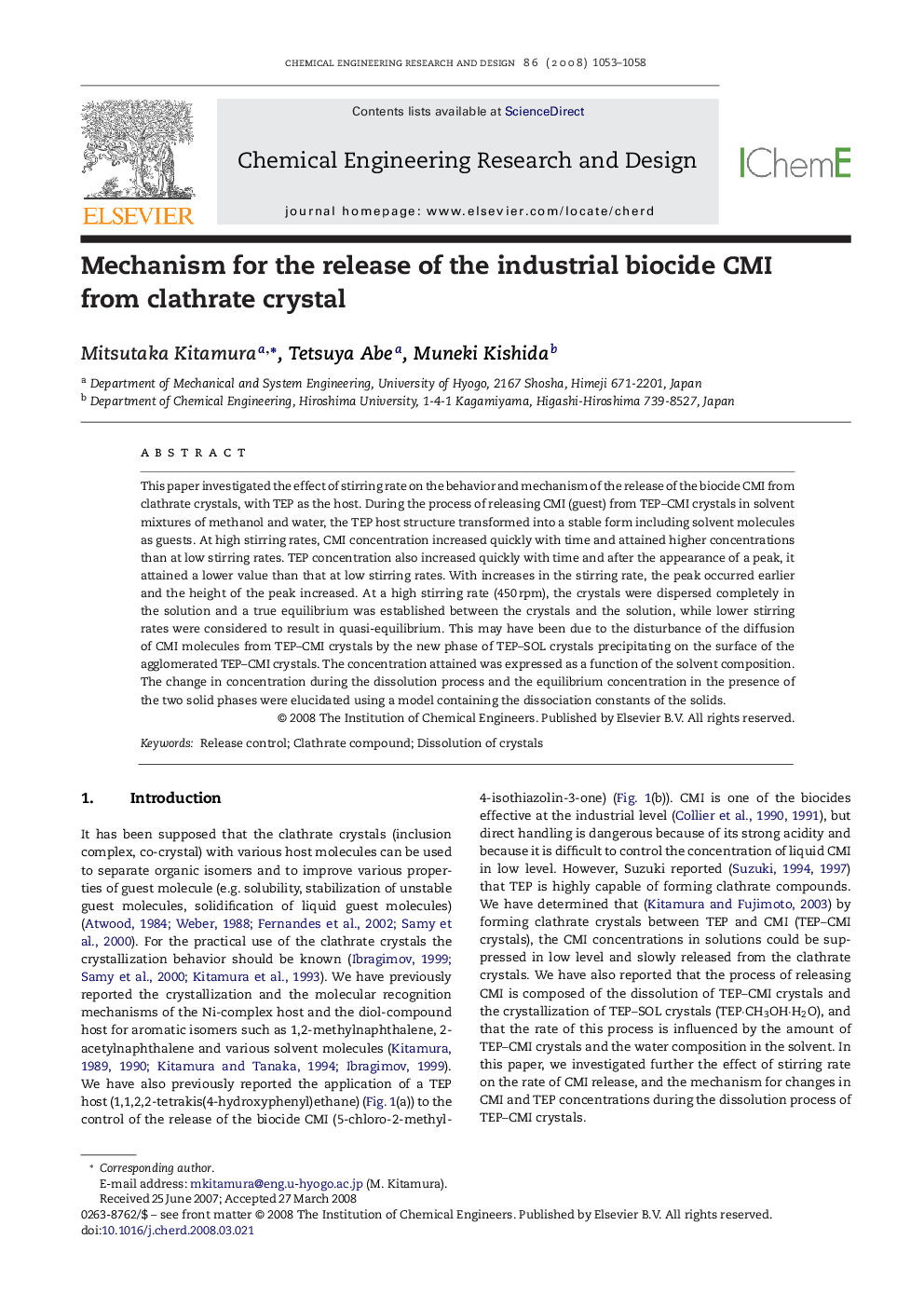| Article ID | Journal | Published Year | Pages | File Type |
|---|---|---|---|---|
| 622439 | Chemical Engineering Research and Design | 2008 | 6 Pages |
This paper investigated the effect of stirring rate on the behavior and mechanism of the release of the biocide CMI from clathrate crystals, with TEP as the host. During the process of releasing CMI (guest) from TEP–CMI crystals in solvent mixtures of methanol and water, the TEP host structure transformed into a stable form including solvent molecules as guests. At high stirring rates, CMI concentration increased quickly with time and attained higher concentrations than at low stirring rates. TEP concentration also increased quickly with time and after the appearance of a peak, it attained a lower value than that at low stirring rates. With increases in the stirring rate, the peak occurred earlier and the height of the peak increased. At a high stirring rate (450 rpm), the crystals were dispersed completely in the solution and a true equilibrium was established between the crystals and the solution, while lower stirring rates were considered to result in quasi-equilibrium. This may have been due to the disturbance of the diffusion of CMI molecules from TEP–CMI crystals by the new phase of TEP–SOL crystals precipitating on the surface of the agglomerated TEP–CMI crystals. The concentration attained was expressed as a function of the solvent composition. The change in concentration during the dissolution process and the equilibrium concentration in the presence of the two solid phases were elucidated using a model containing the dissociation constants of the solids.
